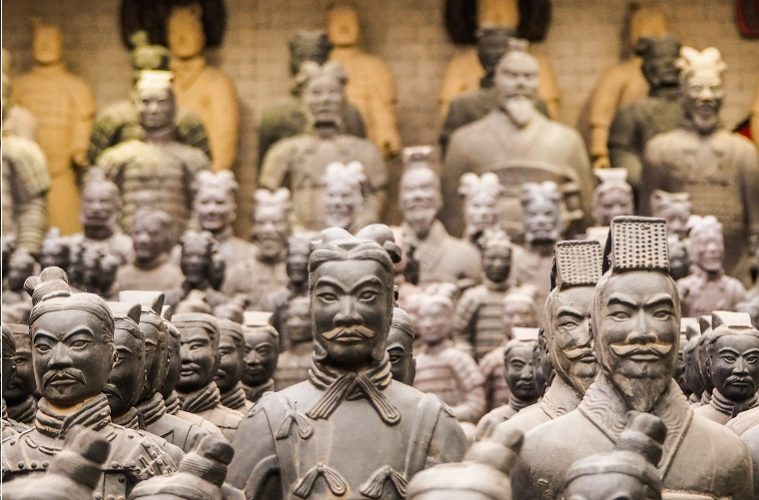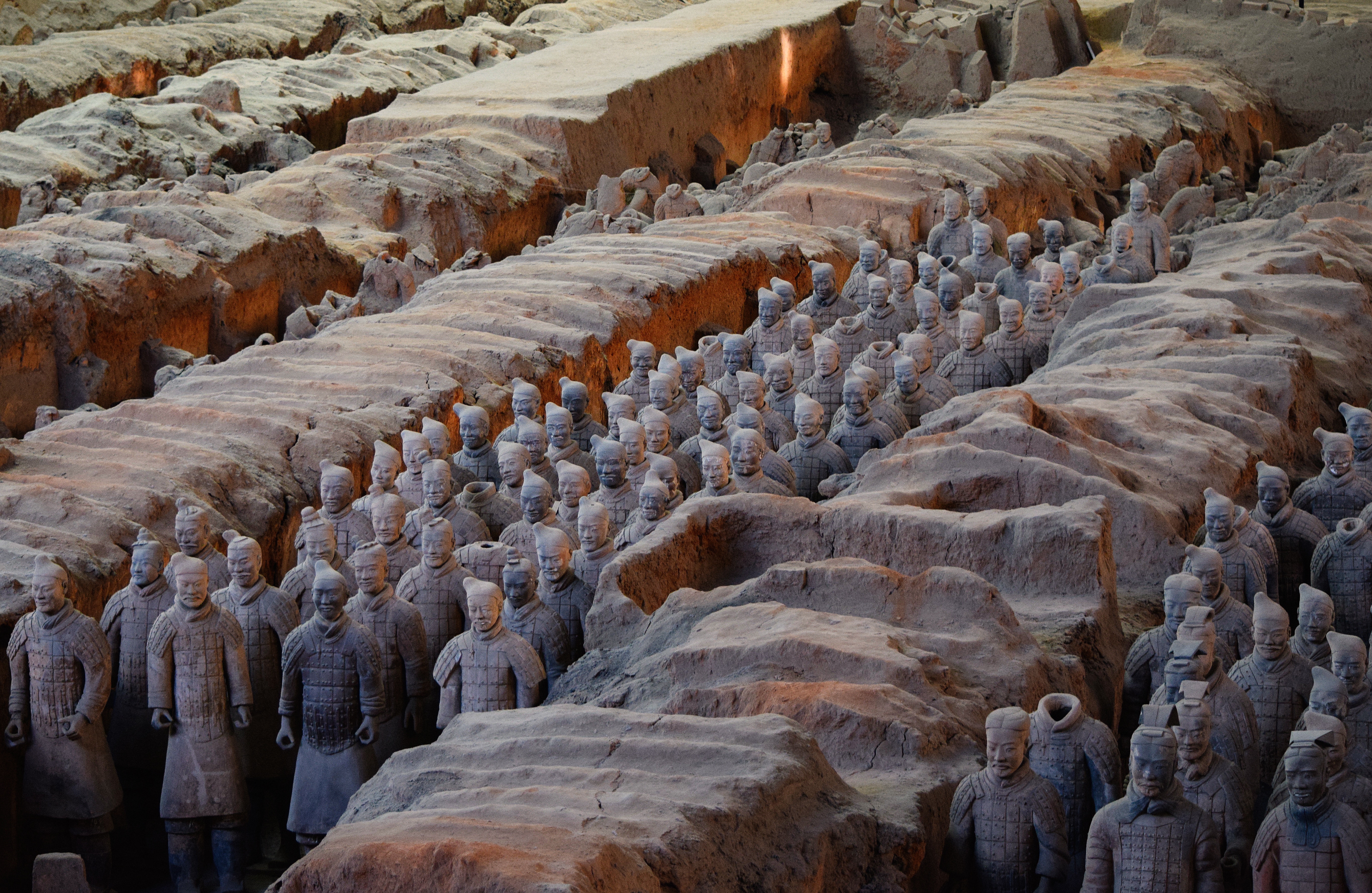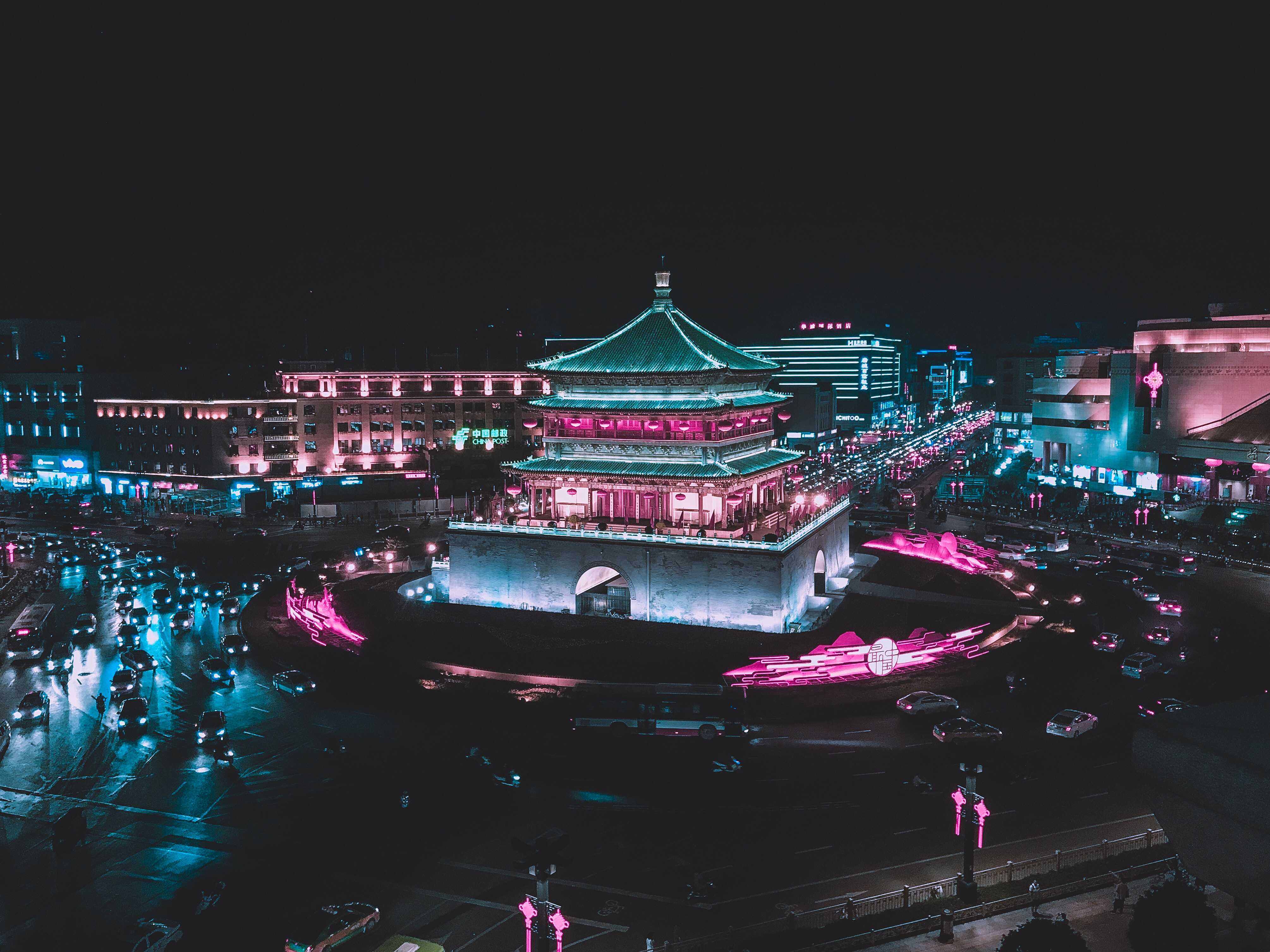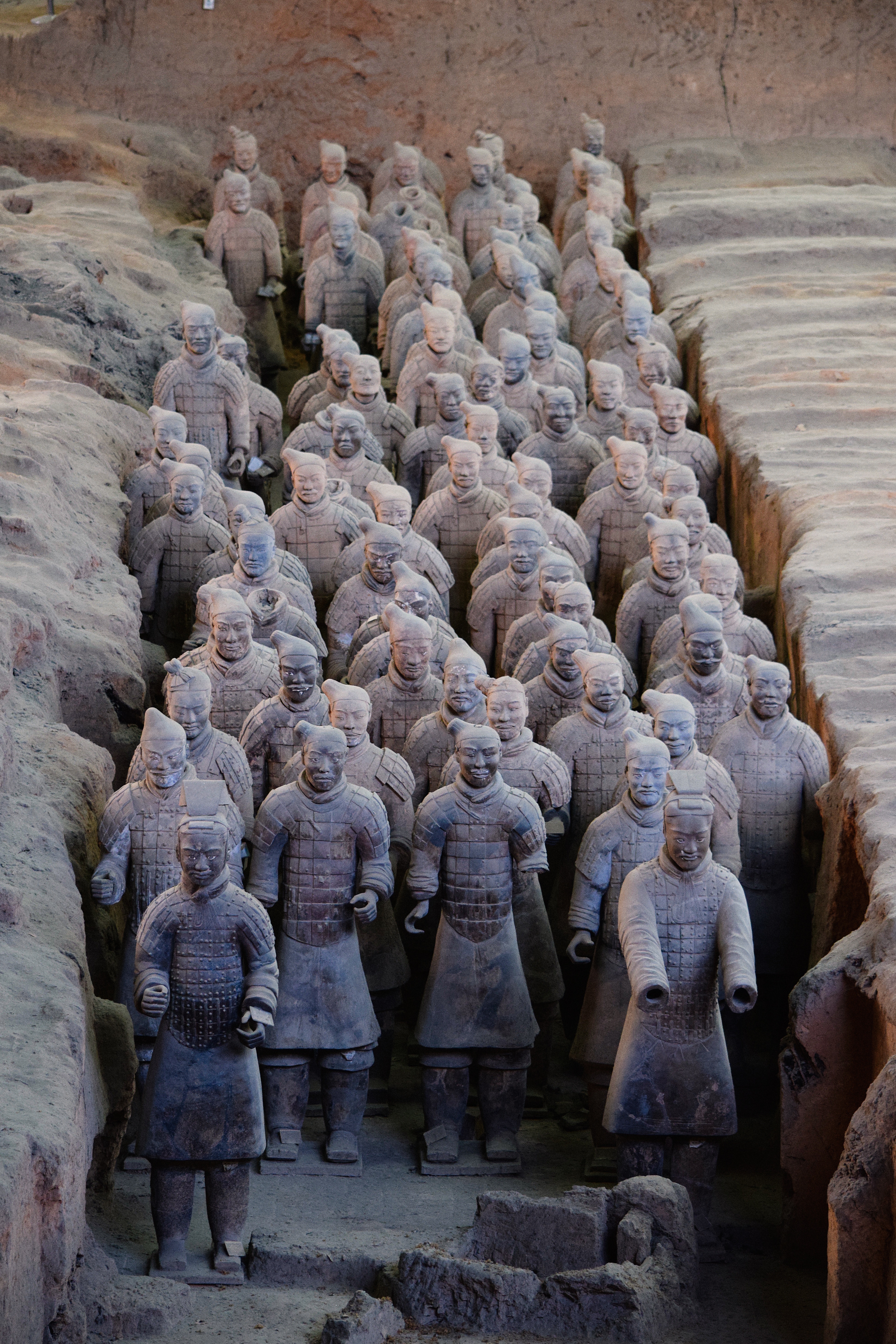The Terracotta Army | In March 1974, China was closed off to the world. A group of seven farmers digging in fields for water close to the city of Xi’an in China discovered an army. The army was a small part of an 8,000-strong battalion of soldiers, officers, infantry and chivalry, all sculpted from terracotta.
The Terracotta Warriors, army to China’s first Emperor Qin Shu Huang, had been discovered, more than two thousand years after their Emperor’s death.
Excavations uncovered 8,000 life sized soldiers in battle array, each with distinctive facial expressions and no two the same. Construction of the vast army began in 246 BC, when Emperor Qin ascended to the throne, aged 13. The soldiers are distributed evenly across three different pits and the presence of a forth, empty pit suggests the mausoleum wasn’t completed. Historians estimate it took 720,000 workers four decades to build, and each soldier is evidence of the craftsmanship and artistry of the legion of Chinese sculptors employed here.
A form of funerary art, the army was constructed to accompany China’s First Emperor as an afterlife guard. The sculptures were moulded in parts, fired, then assembled and painted. The Terracotta Army is considered one of the greatest archaeological sites in the world, and one of the greatest discoveries of the 20th century.
More than a million tourists visit the Terracotta Museum in the Chinese province of Shaanxi each year. And it’s not just soldiers that they see. Also found in the excavations are terracotta musicians, acrobats, concubines and birds, as well as chariots and horses, and 40,000 well preserved bronze weapons.
The warriors are viewed in situ in Vaults One, Two and Three and an exhibition hall featuring the bronze chariots is part of the museum. The best views of the army are from the front corners, but Vault One is usually crowded with visitors. It’s also the largest and most impressive. The size of an airplane hanger, it originally contained more than 6,000 figures, but fewer than 2,000 are now on display. All soldiers and horses in this vault face east, and are armed with either a long spear, dragger or halberd. Each figure is a rich cultural study too, and the differing clothing, hairstyle, expressions and gestures provide plenty of reference for the military history of the period.
Vault Two houses archers, both kneeling and standing, chariots, infantry and troopers, all in battle array. Vault Three represents the Command Post and is the smallest, with only 68 terracotta figures that are sculpted as army officials.
The exhibition hall contains two elaborately restored bronze carriages, each with 3,400 parts and driven by four horses. Made of bronze, there were 1,720 pieces of golden and silver ornaments on each carriage too: they are the best-preserved and have the highest rank among early bronze relics in China and are the biggest pieces of bronze-wear found anywhere in the world.
There is plenty of accommodation to choose from in Xi’an, from executive suites to capsule hostels. Likewise, the food options are plentiful: if you’re opting for street food, then avoid the risk of food poisoning and opt for a known location, such as Dong Xin Hie Night Market.
The Terracotta army is only a small part of a 56 square metre garrison, and excavations are ongoing. It’s estimated than less than 1% of the Emperor’s tomb has been excavated, so there are new discoveries regularly. Return to Xi’an to see them as they’re uncovered, and displayed in their final resting place in Xi’an (Chang’an), the city of Eternal Peace.






